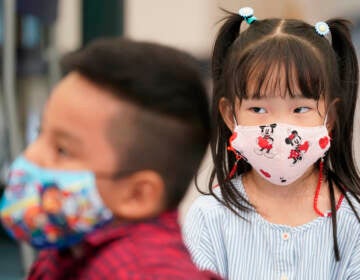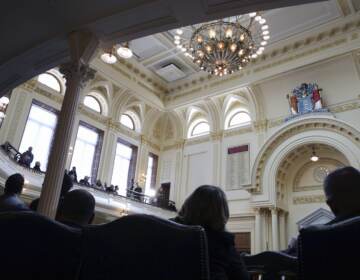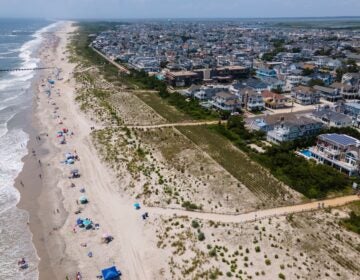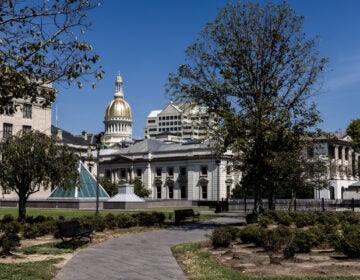N.J. Senate passes a bill to reevaluate the state’s school funding formula
The bill would create a task force to reevaluate the current school funding formula, as legislative leaders tout an agenda focused on making the state more affordable.
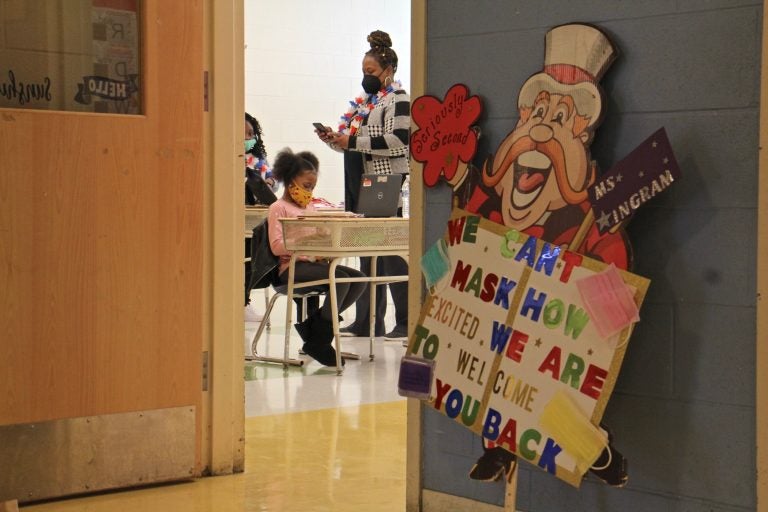
In this April 2021 photo, second graders settle in at their desks for their first day of in-person learning in more than a year at H.B. Wilson Elementary School in Camden, N.J. (Emma Lee/WHYY)
The New Jersey state Senate on Monday unanimously passed a bill that would create a task force to reevaluate the current school funding formula, as legislative leaders tout an agenda focused on making the state more affordable.
Sponsored by Sens. Vin Gopal (D-11) and Steven Oroho (R-24), the bill would establish the task force to study whether the state’s school funding formula adequately meets the needs of school districts. It would be required to issue a report on its findings within a year to the governor and the Legislature.
It would essentially examine the effectiveness of the current system and recommend improvements if needed.
The Senate Education Committee approved the measure about two weeks ago. The bill has not yet been acted upon by the General Assembly.
“Ensuring that the municipalities get what’s fair is always a good thing,” Senate President Nick Scutari said. “So I think the task force is going to have those types of meetings and hearings to see if improvements can be made in a process that has gotten better over the last few years, but isn’t perfect.”
At the beginning of the current legislative session, Republican and Democratic lawmakers said they were open to updating the school funding formula as a way to help lower local property taxes or keep them from rising.
“This is really to bring transparency in the process as far as school funding,” Gopal said.
The funding formula was established in 2008 and set a baseline cost for each student enrolled (which is currently $11,975 for elementary school students). That baseline cost increases depending on certain factors, such as whether the student receives free or reduced price lunch or if the student is bilingual. However, the state has not fully funded districts according to that formula, leaving some districts overfunded and others with less than the formula requires.
If the bill passes, the newly created task force would study these issues, and the methodologies used to weight per-pupil spending, among other things, and could make recommendations to change the formula so it meets districts’ needs.
“We’ve seen a lot of increases over the last few years as it relates to poverty rates in different districts. Free and reduced lunch populations have increased. And now with the recent 2020 census data out, we just want to make sure every district has the most up-to-date information,” Gopal said.
Oroho, the Senate minority leader, said the current school funding formula plays a major role in driving up property taxes in a state that already has some of the highest property taxes in the nation.
In a statement, he said 79% of the schools in his legislative district lost a total of $7 million in the latest state budget and $10.5 million the previous year.
“The task force’s evaluation will help identify flaws and inconsistencies that contribute to funding imbalances,” he said. “This will be an important first step in improving the way taxpayer money is expended for education.”

Get daily updates from WHYY News!
WHYY is your source for fact-based, in-depth journalism and information. As a nonprofit organization, we rely on financial support from readers like you. Please give today.


